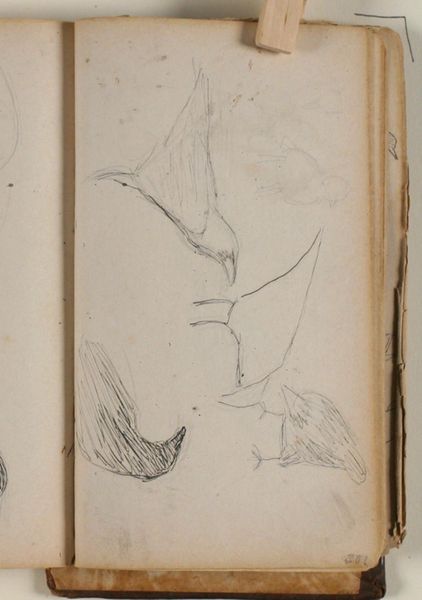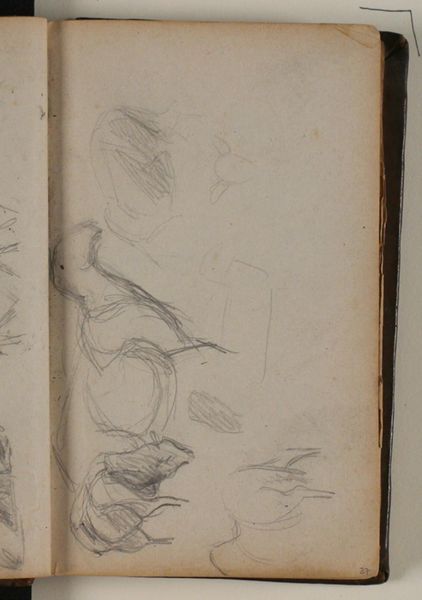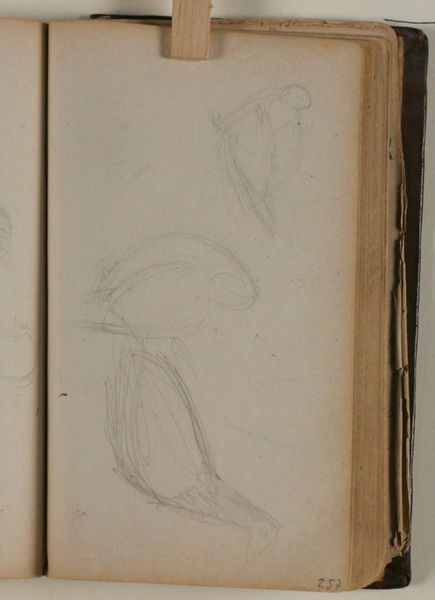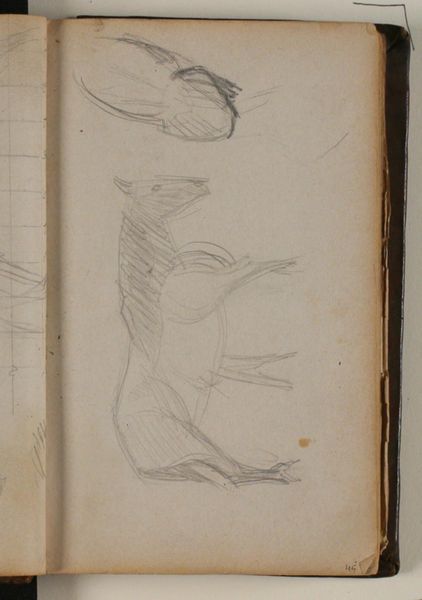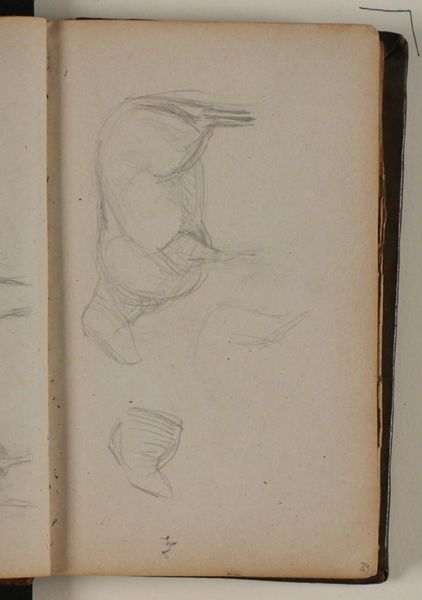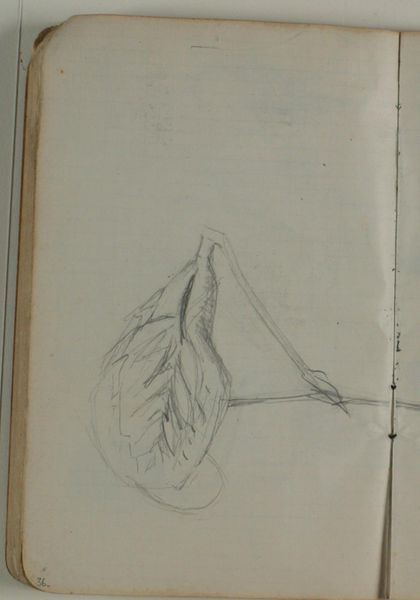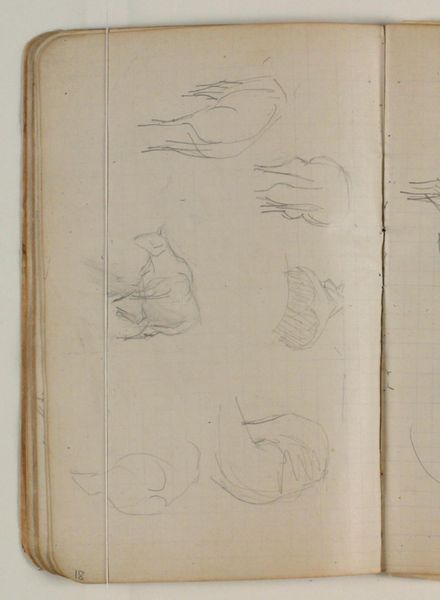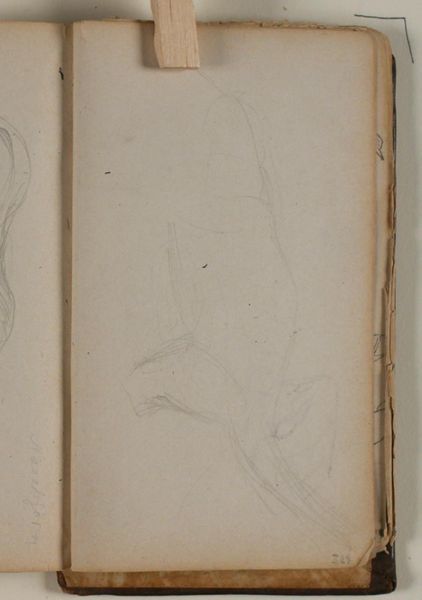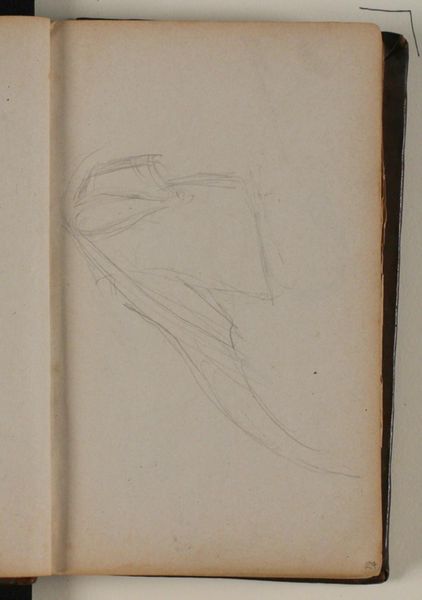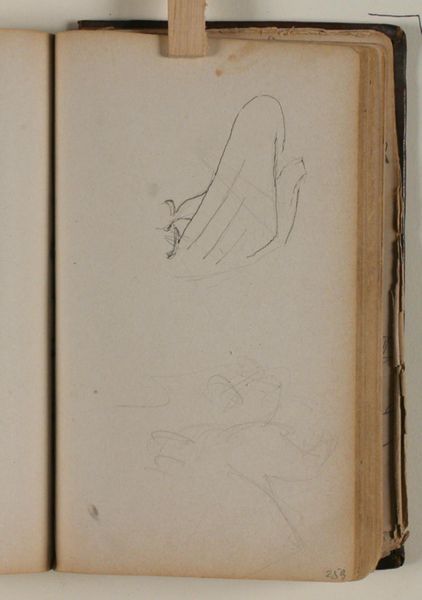
drawing, paper, pencil
#
portrait
#
drawing
#
figuration
#
paper
#
pencil
#
academic-art
Dimensions: 175 mm (height) x 118 mm (width) x 6 mm (depth) (monteringsmaal), 175 mm (height) x 110 mm (width) (bladmaal)
Editor: This piece, titled "Skitser af ben. Notater" – which translates to Sketches of Legs. Notes – is a pencil drawing on paper by Niels Larsen Stevns, created sometime between 1900 and 1905. The quick, almost fleeting lines give it a sense of immediacy. What do you see in this work beyond the initial impression? Curator: For me, it's the stark materiality of the process itself. Consider the labor involved in academic drawing at the turn of the century, particularly the repetitive practice of sketching anatomical studies. This wasn't about high art yet; it was about the craft, the physical act of training the hand and eye. We see Stevns engaging in this practice, likely within the context of a formal art education rooted in rigorous study of form. The humble materials—paper, pencil—further emphasize this grounding in practical skill. Editor: That's interesting, I hadn't considered it as labor in that way. It felt more spontaneous. But thinking about the materials...the mass-produced paper, the graphite extracted and formed into pencils… it highlights a system of production, right? Curator: Precisely. These readily available materials democratized artistic practice to a certain extent, yet the subject matter—academic studies of the human form—reflects existing social and artistic hierarchies. Whose bodies are being studied and for what purpose? Are they then medical studies rather than artistic ones, for instance? How might the mass production of materials have affected the artist's approach to their work, moving it perhaps from private to public practice, or from bespoke to more generic subject-matter? What expectations and material limitations might an artist experience in each of those realms? Editor: So, while seemingly a simple sketch, it embodies larger ideas of production, class, and the academic system? Curator: Indeed. The drawing invites us to consider art not just as a finished product, but as the result of specific material conditions and social forces shaping the artist’s hand. Editor: That’s a perspective shift I appreciate. Thanks for expanding my understanding beyond just the visual! Curator: My pleasure. It's about seeing the network of production, labor, and consumption embedded within the seemingly simple sketch.
Comments
No comments
Be the first to comment and join the conversation on the ultimate creative platform.
